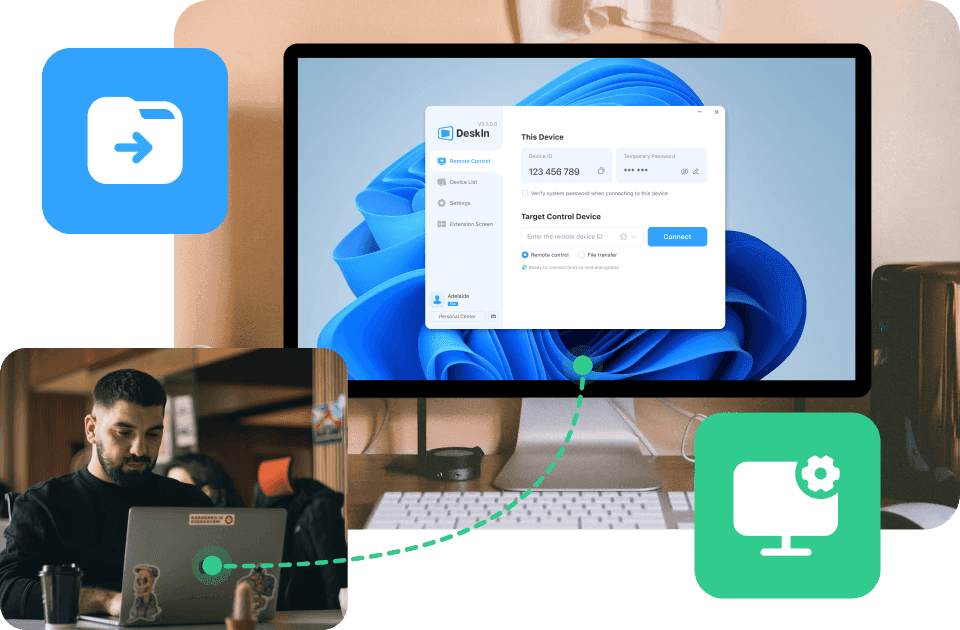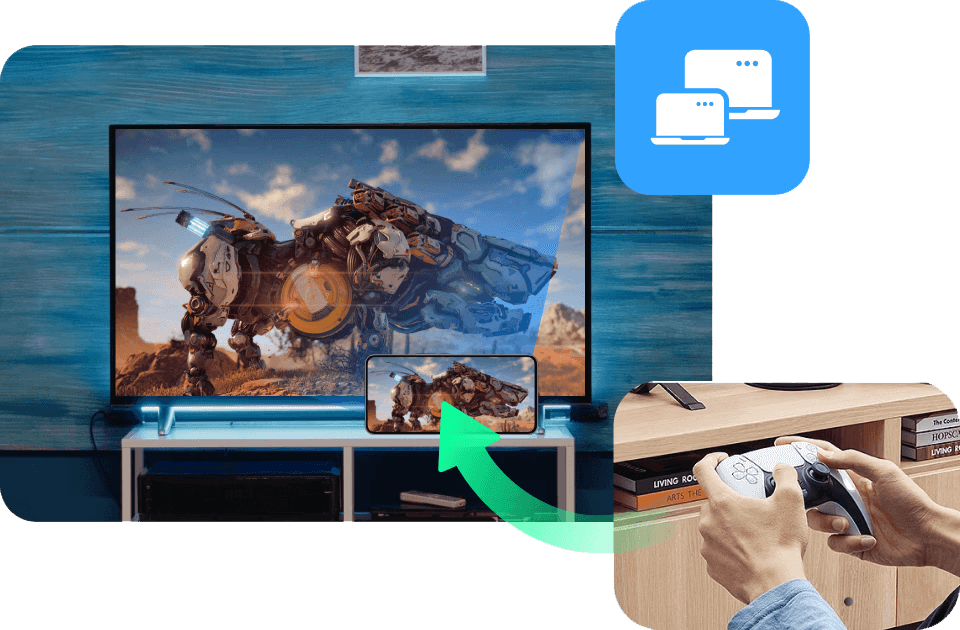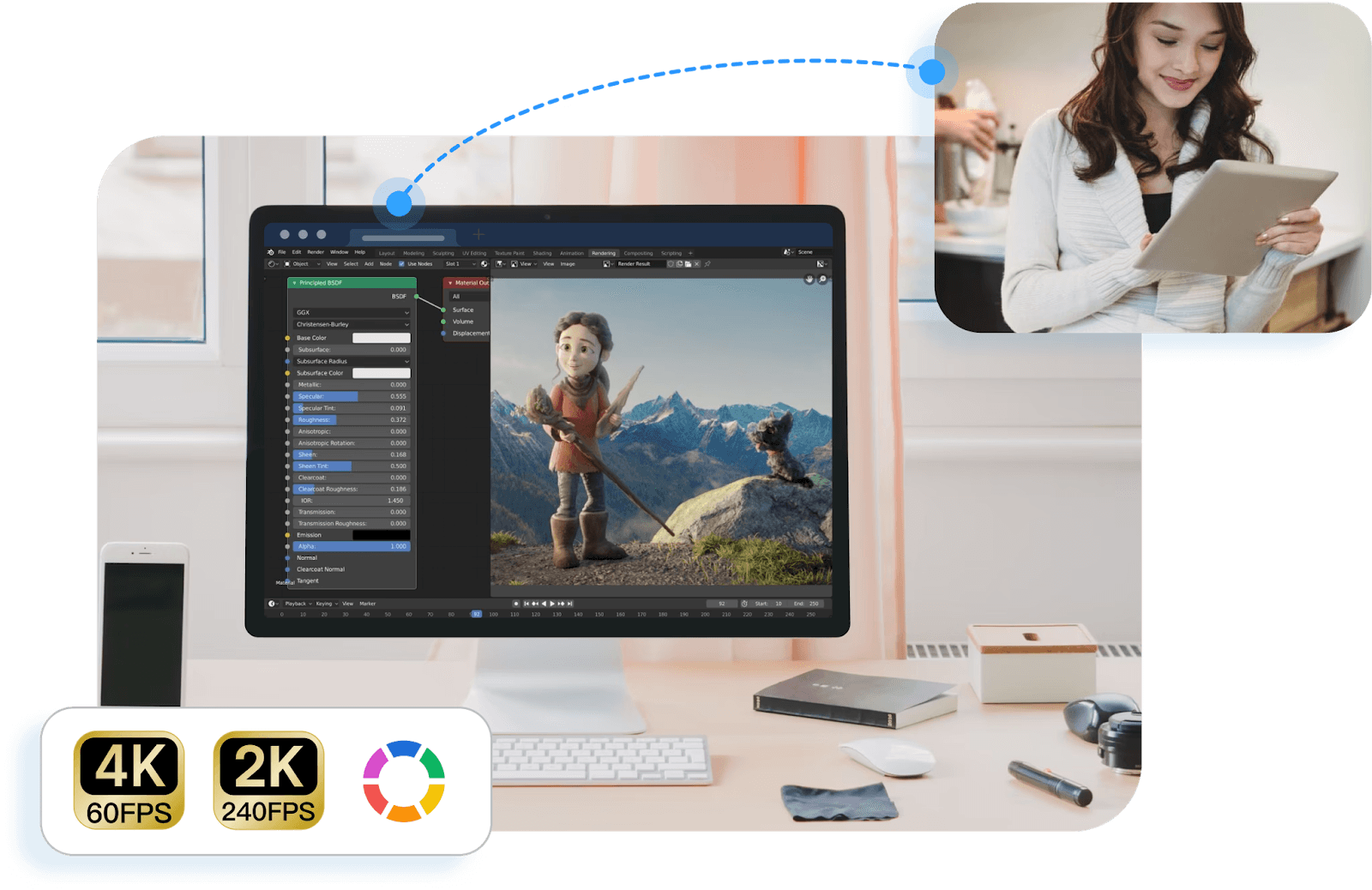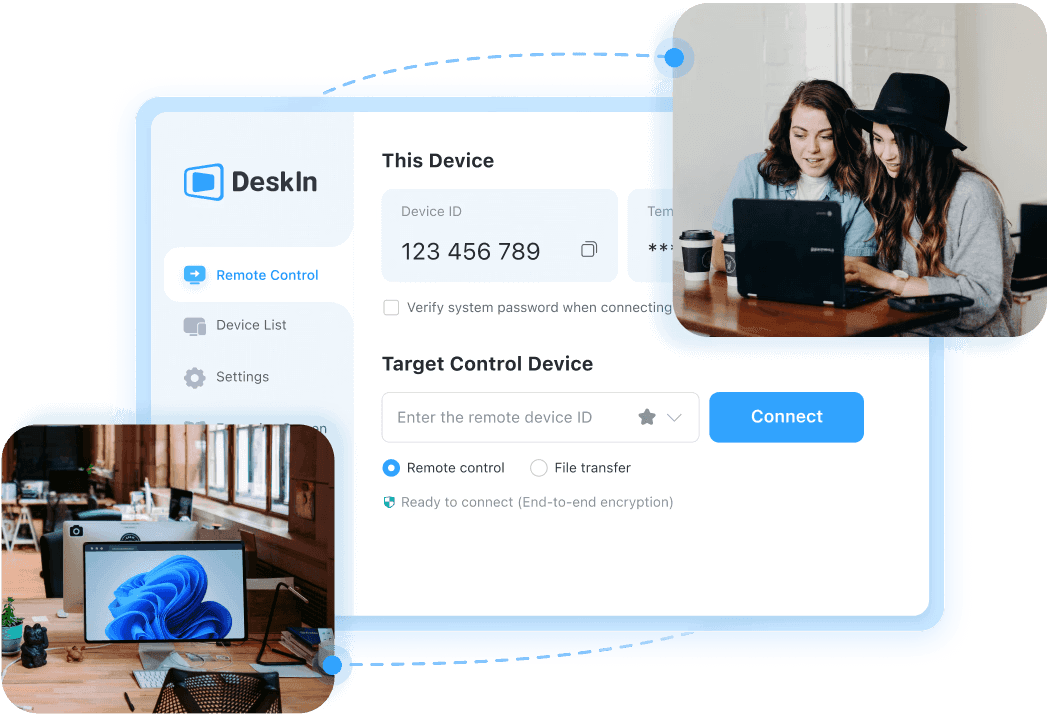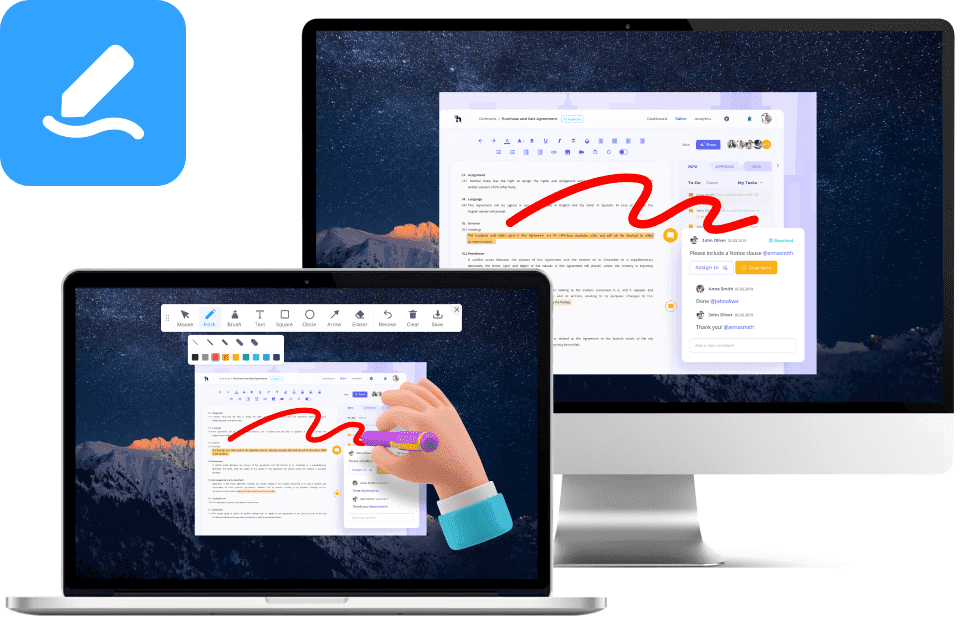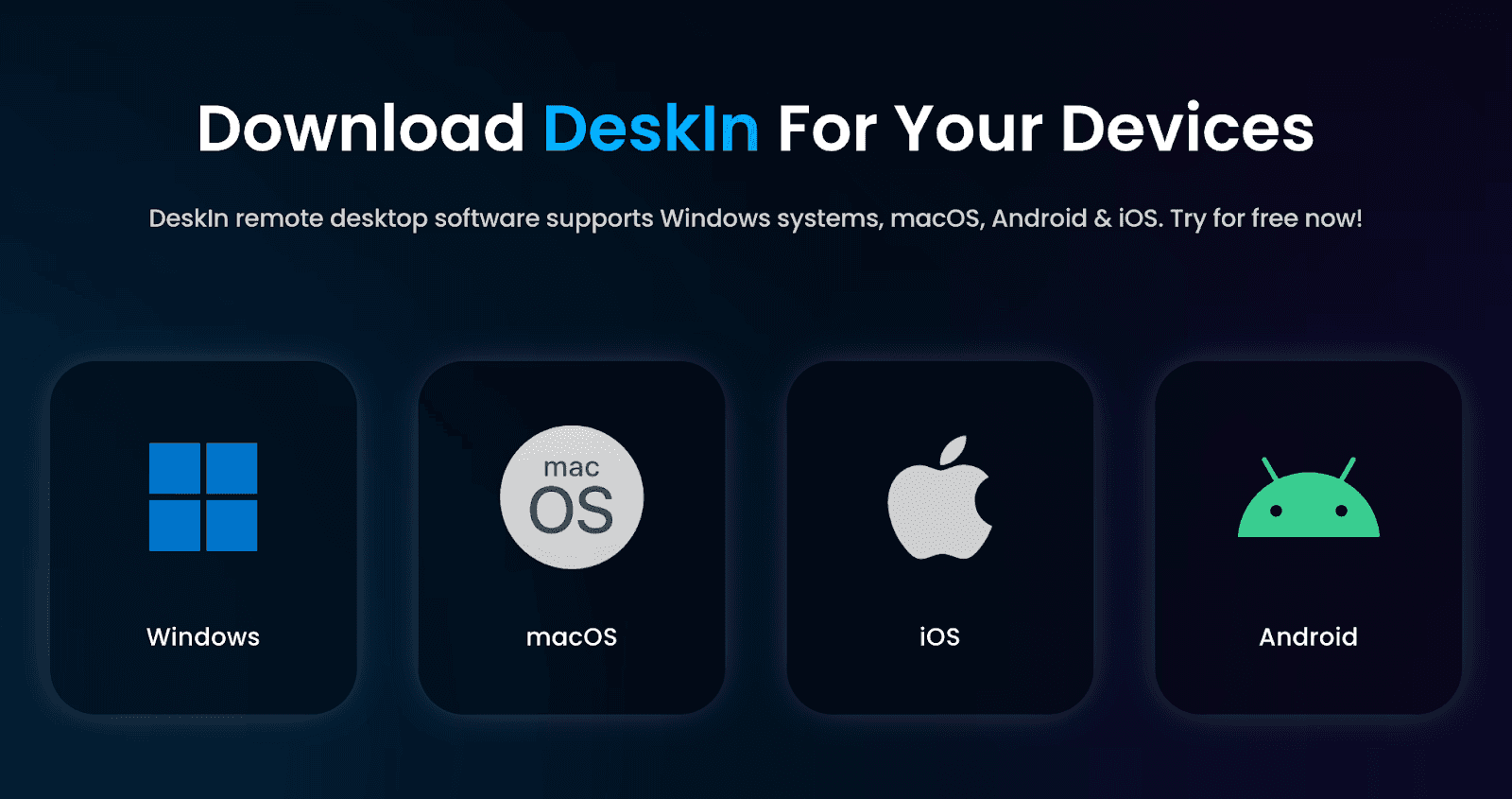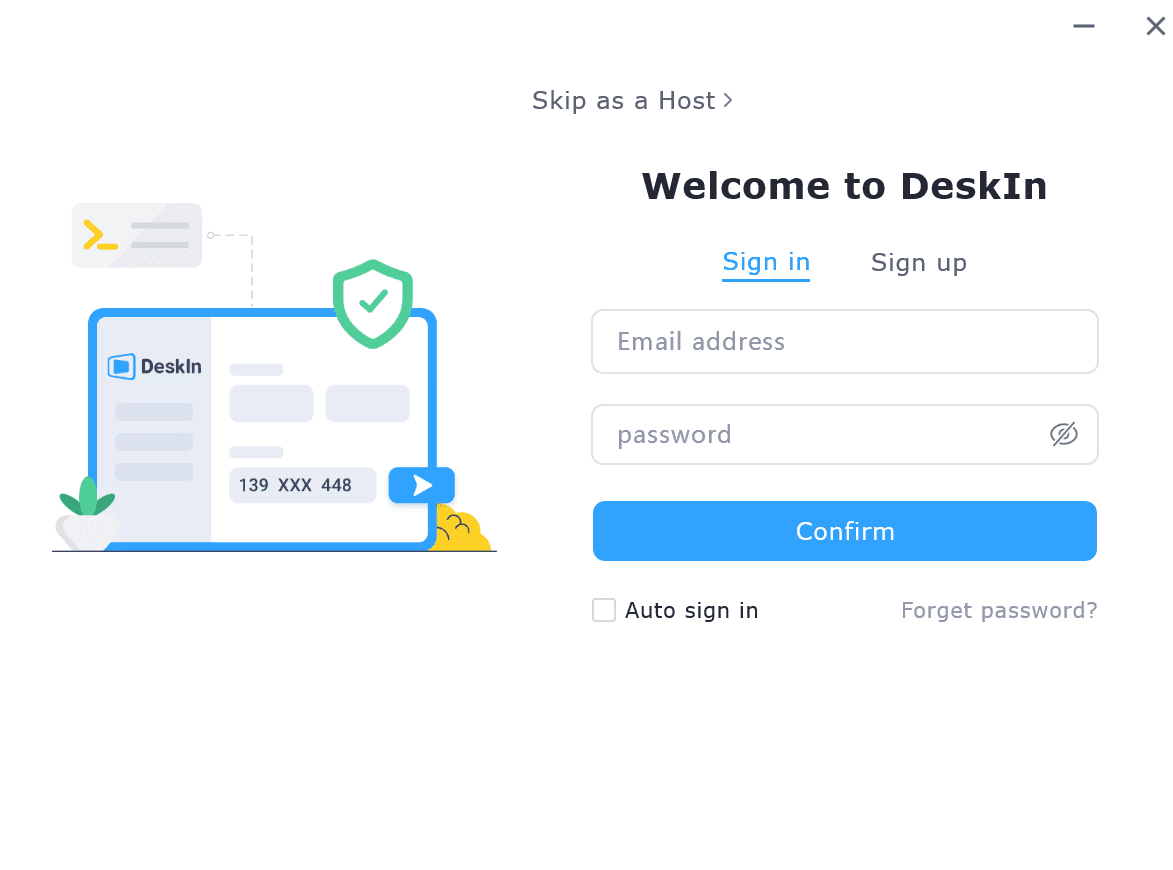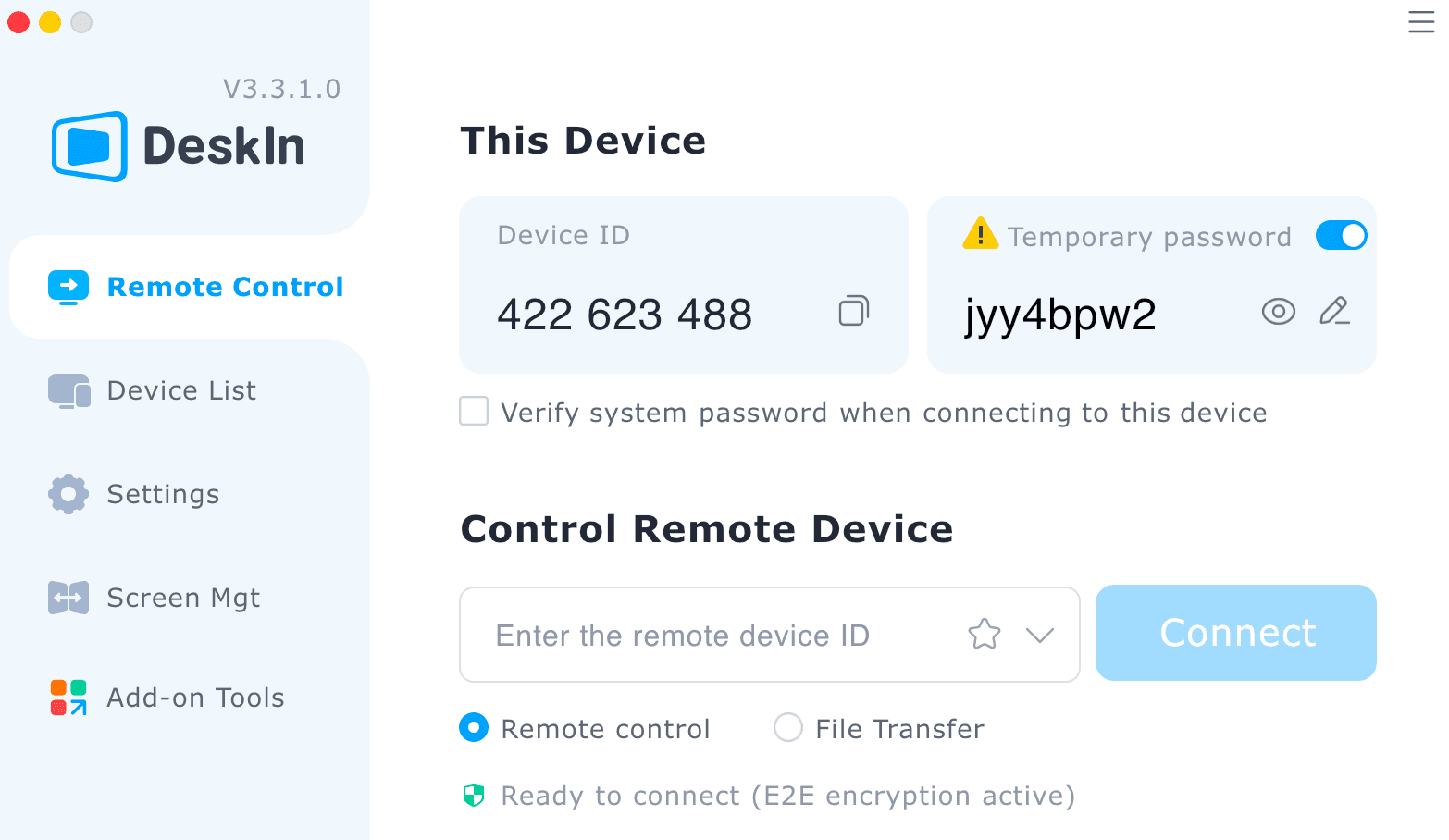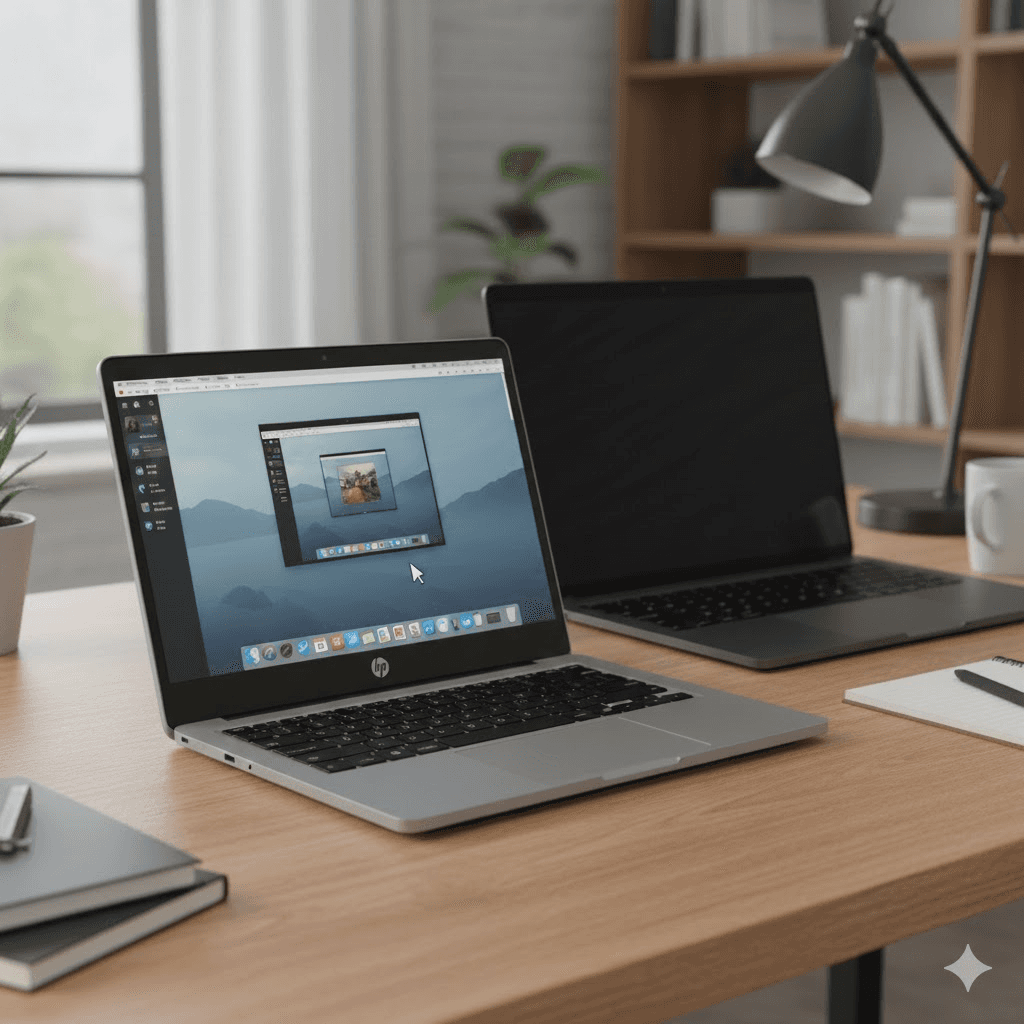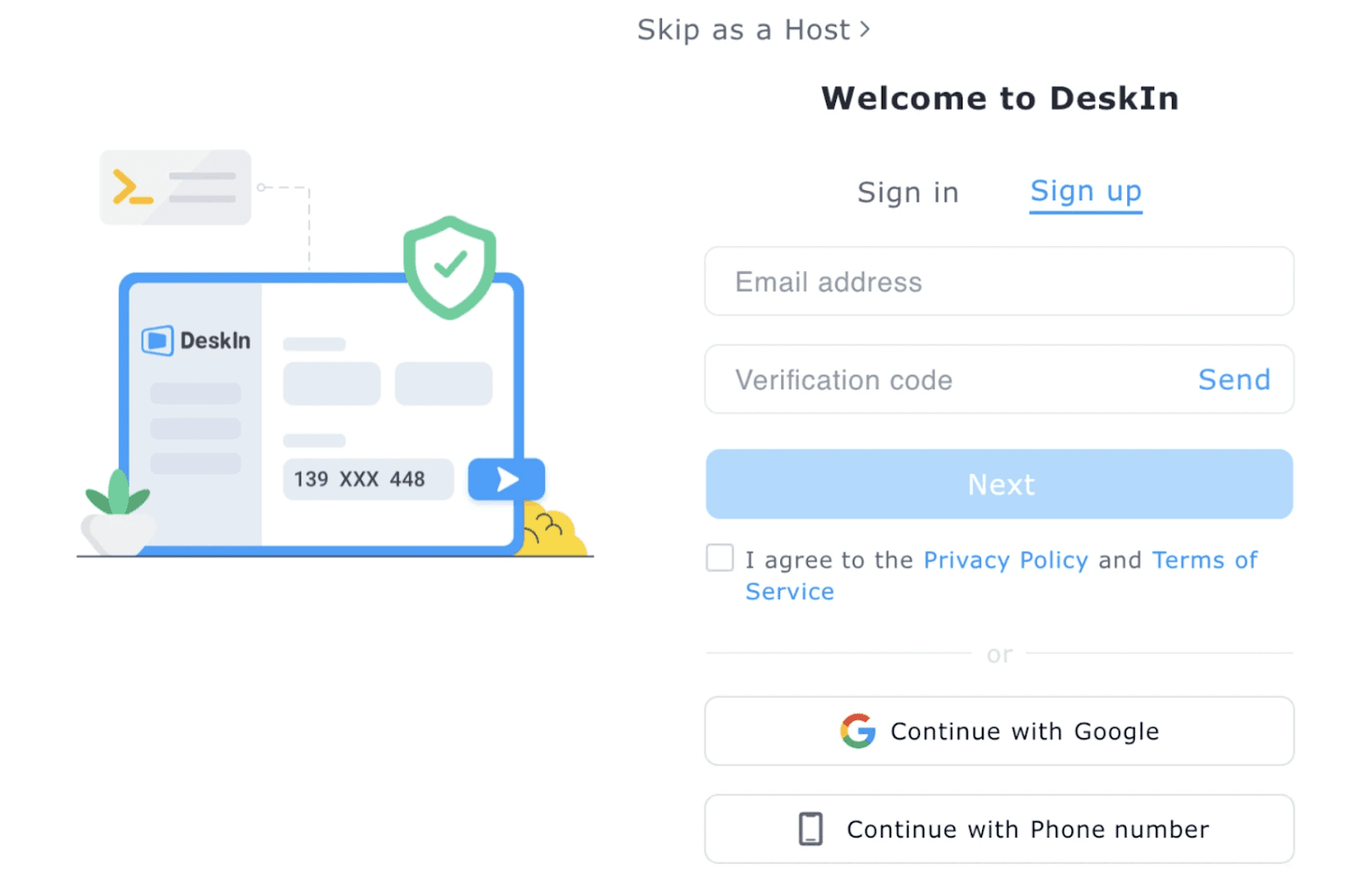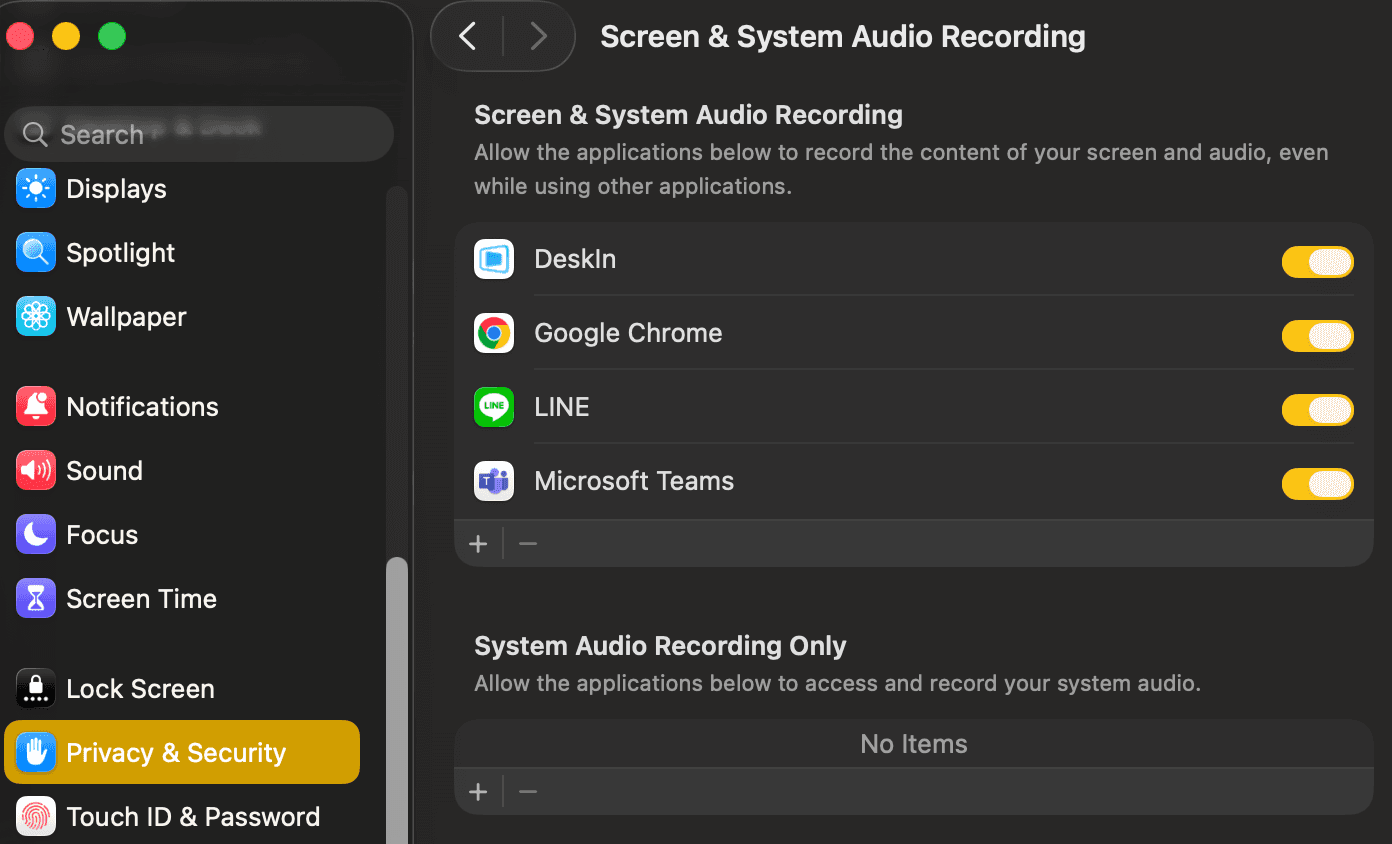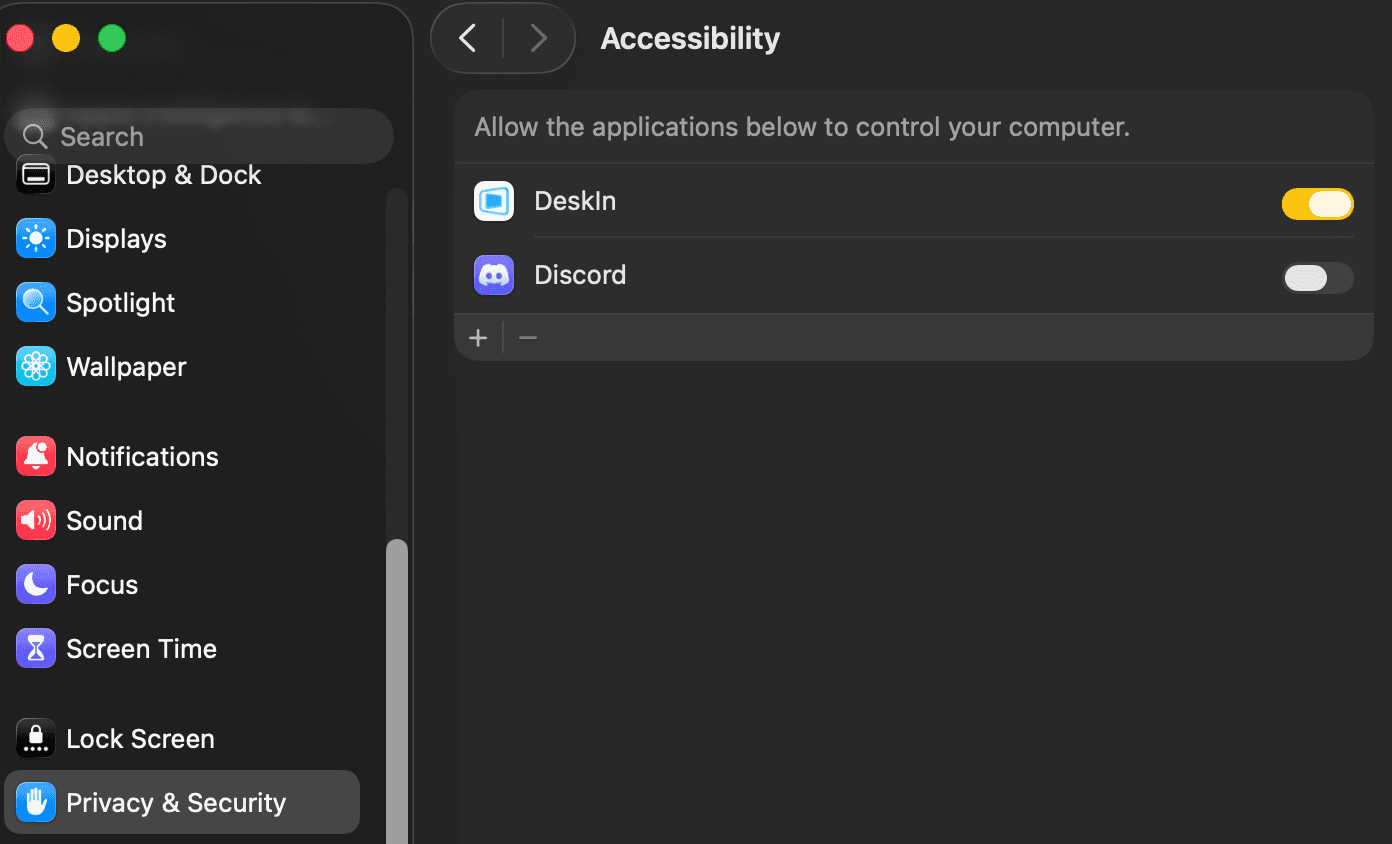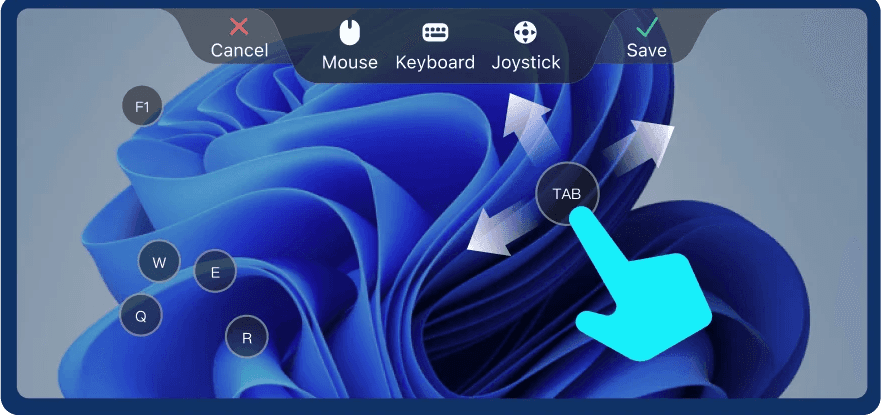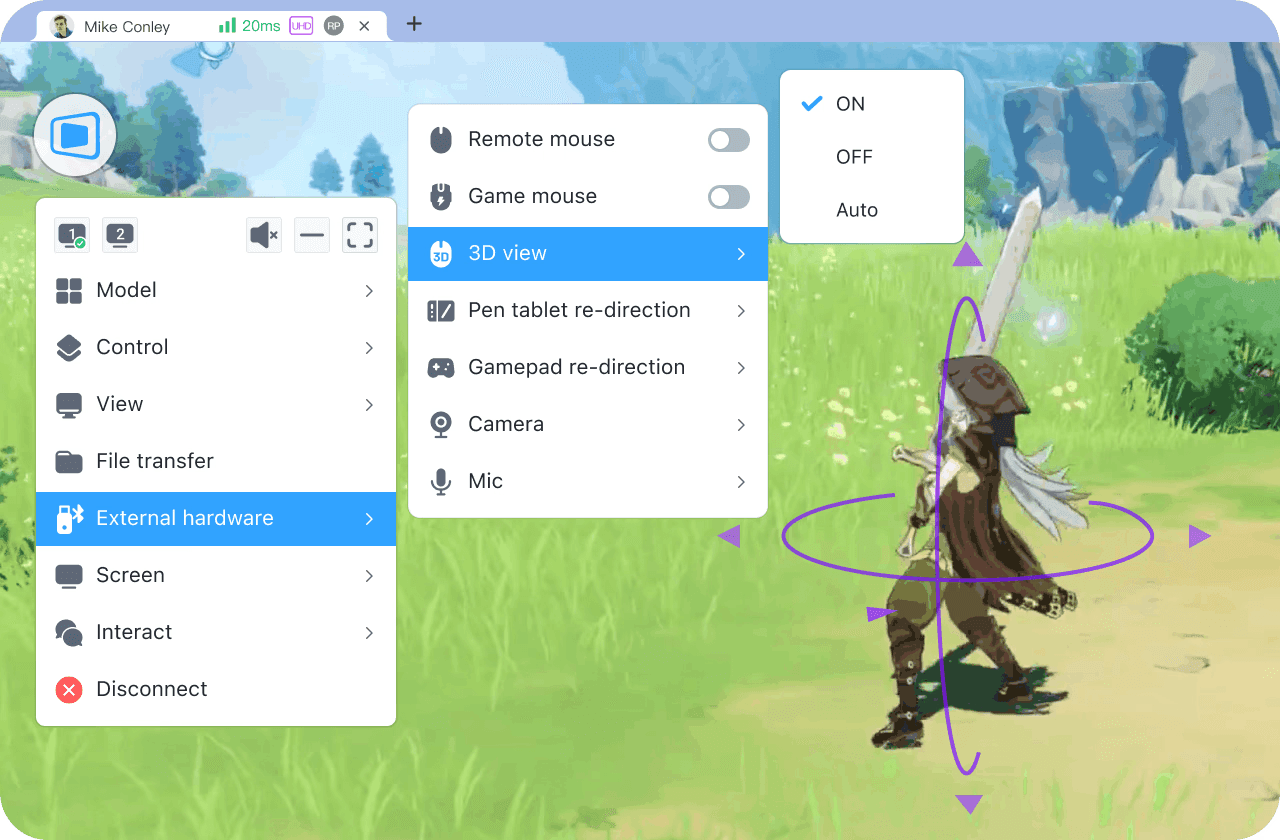Cách kết nối iPad với PC không dây [Hướng dẫn đẩy đủ từng bước]
Kết nối iPad của bạn với một PC mà không cần dây cáp mang đến cho bạn tự do để làm việc, trình bày hoặc thậm chí chơi game một cách dễ dàng. Cho dù đó là chuyển file hay truy cập từ xa, việc có một liên kết không dây ổn định sẽ nâng cao năng suất và trải nghiệm của bạn.
Hướng dẫn này khám phá những cách hiệu quả nhất để kết nối iPad với PC, cả không dây và qua cáp, và so sánh các công cụ và các bước cần thiết cho từng phương pháp.
Cách tốt nhất để kết nối iPad với PC không dây – Sử dụng DeskIn
Một trong những giải pháp đáng tin cậy nhất để kết nối iPad của bạn với PC là sử dụng DeskIn. Ứng dụng này cho phép bạn chia sẻ màn hình iPad của mình một cách không dây với PC của bạn, hỗ trợ âm thanh hai chiều và cung cấp các tính năng điều khiển từ xa — tất cả đều tương thích đa nền tảng.
DeskIn là một công cụ truy cập từ xa mạnh mẽ được thiết kế để cung cấp kết nối hiệu suất cao với độ trễ thấp giữa các thiết bị. Dưới đây là những điểm làm cho nó trở thành sự lựa chọn tốt nhất để kết nối không dây iPad của bạn với PC Windows.

👍 Các tính năng chính của DeskIn:
Độ trễ thấp & Kết nối ổn định: Được hỗ trợ bởi hơn 200 nút máy chủ toàn cầu, đảm bảo các phiên làm việc mượt mà, không bị gián đoạn với độ trễ tối thiểu.
Tính tương thích đa nền tảng: Kết nối dễ dàng với iPad, PC Windows, macOS, Android và các thiết bị khác.
Hiệu suất cao: Ngay cả trong điều kiện mạng kém, DeskIn vẫn duy trì kết nối ổn định và phản hồi tốt.
Cách kết nối iPad với PC bằng DeskIn:
Cài đặt DeskIn rất đơn giản. Chỉ cần làm theo các bước sau:
Bước 1. Cài đặt DeskIn trên cả iPad và PC của bạn. Bạn có thể tải xuống tại trang web chính thức, cửa hàng ứng dụng, cửa hàng chơi hoặc chỉ cần nhấp vào nút bên dưới. Nhấp vào đây để tải xuống
Bước 2. Tạo một tài khoản bằng email của bạn, xác minh và đăng nhập trên cả hai thiết bị.

Bước 3. Trên PC của bạn, cho phép các quyền cần thiết như ghi màn hình và quyền truy cập thuận tiện khi được nhắc. Sau đó, mở phần ID thiết bị và ghi lại ID để đồng bộ với iPad của bạn.

Bước 4. Trên iPad của bạn, mở DeskIn và đăng nhập bằng cùng một tài khoản, tự động danh sách PC của bạn sẽ được hiển thị từ các thiết bị có sẵn.

Bước 5. Chọn thiết bị PC của bạn, sau đó khi bạn nhấp vào điều khiển từ xa hoặc các mục khác, bạn có thể kết nối ngay lập tức mà không cần mật khẩu.

Bước 6. Sau đó, thiết bị sẽ tự động kết nối với PC trong khi chờ được ủy quyền.
Các phương pháp thay thế để kết nối iPad với PC không dây
Mặc dù DeskIn cung cấp trải nghiệm tổng thể tốt nhất, vẫn có những phương pháp khác để kết nối iPad của bạn với PC không dây. Đây là hai lựa chọn phổ biến: AirDroid.
Sử dụng AirDroid Personal
AirDroid là một công cụ kết nối không dây tập trung vào việc quản lý tệp giữa các thiết bị hơn là điều khiển từ xa toàn diện.
Bước 1. Cài đặt AirDroid trên cả PC và iPad của bạn.
Bước 2. Tạo một tài khoản AirDroid và đăng nhập trên cả hai thiết bị.
Bước 3. Kết nối cả hai thiết bị trên cùng một mạng Wi-Fi.
Bước 4. Bắt đầu quản lý tệp, gửi tin nhắn hoặc phản chiếu màn hình từ iPad sang PC.
DeskIn so với các phương pháp kết nối không dây khác: Phương pháp nào là tốt nhất?
Chọn công cụ tốt nhất phụ thuộc vào nhu cầu của bạn. Đây là một so sánh giữa DeskIn và AirDroid:
Tính năng | DeskIn | AirDroid |
Dễ sử dụng | ✅ Cài đặt trực quan | ✅ Quản lý tệp dễ dàng |
Hiệu suất | ✅ Độ trễ thấp, truy cập mượt mà | ❌ Phụ thuộc vào Wi-Fi |
Bảo mật | ✅ Mã hóa đầu cuối, 2FA | ✅ Được mã hóa nhưng kiểm soát ít hơn |
Hỗ trợ đa nền tảng | ✅ Windows, macOS, iOS, Android | ✅ iOS, Android, Windows, Mac |
Hỗ trợ chuyển tệp | ✅ Có | ✅ Có |
Yêu cầu internet | ✅ Xử lý băng thông thấp | ✅ Cần kết nối Wi-Fi |
Kết luận: DeskIn cung cấp sự kết hợp tốt nhất giữa bảo mật, hiệu suất, dễ sử dụng và tính linh hoạt, khiến nó trở thành lựa chọn hàng đầu cho việc kết nối iPad với PC không dây.
Các mẹo bảo mật cần thiết cho kết nối không dây giữa iPad và PC
Để đảm bảo kết nối không dây an toàn và riêng tư:
Sử dụng mật khẩu mạnh và kích hoạt 2FA: Bảo vệ tài khoản của bạn bằng mật khẩu bảo mật và xác thực hai yếu tố.
Bật các tính năng bảo mật trên DeskIn: Sử dụng màn hình riêng tư và kiểm soát truy cập để ngăn chặn truy cập trái phép.
Giữ phần mềm được cập nhật: Cập nhật thường xuyên DeskIn, ứng dụng Remote Desktop và hệ điều hành của bạn.
Sử dụng mạng an toàn: Luôn kết nối thông qua mạng riêng hoặc mạng bảo mật VPN, tránh Wi-Fi công cộng bất cứ khi nào có thể.
Thực hiện theo những thực hành tốt nhất này sẽ giữ cho dữ liệu và kết nối của bạn an toàn trong khi bạn làm việc hoặc chơi game từ xa.
Các câu hỏi thường gặp về việc kết nối iPad với PC
Tôi có thể kết nối iPad của mình với PC không dây miễn phí không?
Có, DeskIn cung cấp phiên bản miễn phí cho việc truy cập từ xa cơ bản, và AirDroid có các tính năng miễn phí giới hạn với các nâng cấp trả phí.
Tôi có thể điều khiển PC của mình từ iPad mà không cần cáp không?
Chắc chắn rồi! Với các ứng dụng như DeskIn, bạn có thể hoàn toàn điều khiển PC của mình không dây qua Wi-Fi hoặc dữ liệu di động.
Kết luận
Kết nối iPad của bạn với PC mở ra một thế giới tiện lợi cho năng suất, giải trí và làm việc từ xa. Trong khi AirDroid cung cấp khả năng kết nối cơ bản, DeskIn nổi bật với hiệu suất liền mạch, bảo mật mạnh mẽ và trải nghiệm thân thiện với người sử dụng.
Nhấp vào đây và bắt đầu với DeskIn hôm nay và tận hưởng truy cập không dây dễ dàng giữa iPad và PC của bạn!
Cách kết nối iPad với PC không dây [Hướng dẫn đẩy đủ từng bước]
Kết nối iPad của bạn với một PC mà không cần dây cáp mang đến cho bạn tự do để làm việc, trình bày hoặc thậm chí chơi game một cách dễ dàng. Cho dù đó là chuyển file hay truy cập từ xa, việc có một liên kết không dây ổn định sẽ nâng cao năng suất và trải nghiệm của bạn.
Hướng dẫn này khám phá những cách hiệu quả nhất để kết nối iPad với PC, cả không dây và qua cáp, và so sánh các công cụ và các bước cần thiết cho từng phương pháp.
Cách tốt nhất để kết nối iPad với PC không dây – Sử dụng DeskIn
Một trong những giải pháp đáng tin cậy nhất để kết nối iPad của bạn với PC là sử dụng DeskIn. Ứng dụng này cho phép bạn chia sẻ màn hình iPad của mình một cách không dây với PC của bạn, hỗ trợ âm thanh hai chiều và cung cấp các tính năng điều khiển từ xa — tất cả đều tương thích đa nền tảng.
DeskIn là một công cụ truy cập từ xa mạnh mẽ được thiết kế để cung cấp kết nối hiệu suất cao với độ trễ thấp giữa các thiết bị. Dưới đây là những điểm làm cho nó trở thành sự lựa chọn tốt nhất để kết nối không dây iPad của bạn với PC Windows.

👍 Các tính năng chính của DeskIn:
Độ trễ thấp & Kết nối ổn định: Được hỗ trợ bởi hơn 200 nút máy chủ toàn cầu, đảm bảo các phiên làm việc mượt mà, không bị gián đoạn với độ trễ tối thiểu.
Tính tương thích đa nền tảng: Kết nối dễ dàng với iPad, PC Windows, macOS, Android và các thiết bị khác.
Hiệu suất cao: Ngay cả trong điều kiện mạng kém, DeskIn vẫn duy trì kết nối ổn định và phản hồi tốt.
Cách kết nối iPad với PC bằng DeskIn:
Cài đặt DeskIn rất đơn giản. Chỉ cần làm theo các bước sau:
Bước 1. Cài đặt DeskIn trên cả iPad và PC của bạn. Bạn có thể tải xuống tại trang web chính thức, cửa hàng ứng dụng, cửa hàng chơi hoặc chỉ cần nhấp vào nút bên dưới. Nhấp vào đây để tải xuống
Bước 2. Tạo một tài khoản bằng email của bạn, xác minh và đăng nhập trên cả hai thiết bị.

Bước 3. Trên PC của bạn, cho phép các quyền cần thiết như ghi màn hình và quyền truy cập thuận tiện khi được nhắc. Sau đó, mở phần ID thiết bị và ghi lại ID để đồng bộ với iPad của bạn.

Bước 4. Trên iPad của bạn, mở DeskIn và đăng nhập bằng cùng một tài khoản, tự động danh sách PC của bạn sẽ được hiển thị từ các thiết bị có sẵn.

Bước 5. Chọn thiết bị PC của bạn, sau đó khi bạn nhấp vào điều khiển từ xa hoặc các mục khác, bạn có thể kết nối ngay lập tức mà không cần mật khẩu.

Bước 6. Sau đó, thiết bị sẽ tự động kết nối với PC trong khi chờ được ủy quyền.
Các phương pháp thay thế để kết nối iPad với PC không dây
Mặc dù DeskIn cung cấp trải nghiệm tổng thể tốt nhất, vẫn có những phương pháp khác để kết nối iPad của bạn với PC không dây. Đây là hai lựa chọn phổ biến: AirDroid.
Sử dụng AirDroid Personal
AirDroid là một công cụ kết nối không dây tập trung vào việc quản lý tệp giữa các thiết bị hơn là điều khiển từ xa toàn diện.
Bước 1. Cài đặt AirDroid trên cả PC và iPad của bạn.
Bước 2. Tạo một tài khoản AirDroid và đăng nhập trên cả hai thiết bị.
Bước 3. Kết nối cả hai thiết bị trên cùng một mạng Wi-Fi.
Bước 4. Bắt đầu quản lý tệp, gửi tin nhắn hoặc phản chiếu màn hình từ iPad sang PC.
DeskIn so với các phương pháp kết nối không dây khác: Phương pháp nào là tốt nhất?
Chọn công cụ tốt nhất phụ thuộc vào nhu cầu của bạn. Đây là một so sánh giữa DeskIn và AirDroid:
Tính năng | DeskIn | AirDroid |
Dễ sử dụng | ✅ Cài đặt trực quan | ✅ Quản lý tệp dễ dàng |
Hiệu suất | ✅ Độ trễ thấp, truy cập mượt mà | ❌ Phụ thuộc vào Wi-Fi |
Bảo mật | ✅ Mã hóa đầu cuối, 2FA | ✅ Được mã hóa nhưng kiểm soát ít hơn |
Hỗ trợ đa nền tảng | ✅ Windows, macOS, iOS, Android | ✅ iOS, Android, Windows, Mac |
Hỗ trợ chuyển tệp | ✅ Có | ✅ Có |
Yêu cầu internet | ✅ Xử lý băng thông thấp | ✅ Cần kết nối Wi-Fi |
Kết luận: DeskIn cung cấp sự kết hợp tốt nhất giữa bảo mật, hiệu suất, dễ sử dụng và tính linh hoạt, khiến nó trở thành lựa chọn hàng đầu cho việc kết nối iPad với PC không dây.
Các mẹo bảo mật cần thiết cho kết nối không dây giữa iPad và PC
Để đảm bảo kết nối không dây an toàn và riêng tư:
Sử dụng mật khẩu mạnh và kích hoạt 2FA: Bảo vệ tài khoản của bạn bằng mật khẩu bảo mật và xác thực hai yếu tố.
Bật các tính năng bảo mật trên DeskIn: Sử dụng màn hình riêng tư và kiểm soát truy cập để ngăn chặn truy cập trái phép.
Giữ phần mềm được cập nhật: Cập nhật thường xuyên DeskIn, ứng dụng Remote Desktop và hệ điều hành của bạn.
Sử dụng mạng an toàn: Luôn kết nối thông qua mạng riêng hoặc mạng bảo mật VPN, tránh Wi-Fi công cộng bất cứ khi nào có thể.
Thực hiện theo những thực hành tốt nhất này sẽ giữ cho dữ liệu và kết nối của bạn an toàn trong khi bạn làm việc hoặc chơi game từ xa.
Các câu hỏi thường gặp về việc kết nối iPad với PC
Tôi có thể kết nối iPad của mình với PC không dây miễn phí không?
Có, DeskIn cung cấp phiên bản miễn phí cho việc truy cập từ xa cơ bản, và AirDroid có các tính năng miễn phí giới hạn với các nâng cấp trả phí.
Tôi có thể điều khiển PC của mình từ iPad mà không cần cáp không?
Chắc chắn rồi! Với các ứng dụng như DeskIn, bạn có thể hoàn toàn điều khiển PC của mình không dây qua Wi-Fi hoặc dữ liệu di động.
Kết luận
Kết nối iPad của bạn với PC mở ra một thế giới tiện lợi cho năng suất, giải trí và làm việc từ xa. Trong khi AirDroid cung cấp khả năng kết nối cơ bản, DeskIn nổi bật với hiệu suất liền mạch, bảo mật mạnh mẽ và trải nghiệm thân thiện với người sử dụng.
Nhấp vào đây và bắt đầu với DeskIn hôm nay và tận hưởng truy cập không dây dễ dàng giữa iPad và PC của bạn!

Play x Work
All at Once
DeskIn Remote Game
only $14.32 USD 🎉 Limited on July 16-31
Add promo code: deskinsummer1





